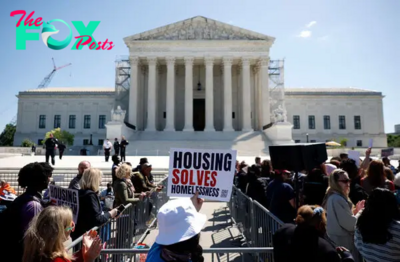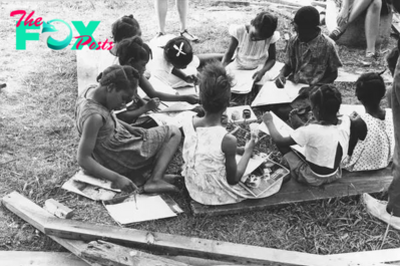History
How the College Application Essay Became So Important
School is out and summer is here. Yet future high school seniors and their families are likely already thinking about applying to college — a process that can be as labor-intensive and time-consuming as it is confusing. Students submit SAT scores, grades, references, personal essays, and more, often without a clear sense of what counts most.
The challenges facing college applicants today aren’t new. For over a century, Americans seeking higher Education have had to navigate complicated admissions requirements including exams and grades as well as qualitative metrics of assessment, such as references, interviews, and essays.
Collecting so much academic and personal information has given colleges and universities greater control over the kinds of students they admit. In the first half of the 20th century, this information was mainly used to bar some applicants based on race, gender, and religion. Since the social movements of the 1960s and 70s, however, it has been used to do nearly the opposite by expanding access to previously excluded groups. In this process, personal essays have been especially valuable for the unique insights they can offer into applicants’ backgrounds and perspectives. In the context of today’s narrowing national diversity agenda, they are key to promoting inclusion in American higher education.
In the late 19th century, college admission standards were relatively low in America, even at the “Big Three” private universities, Harvard, Yale, and Princeton. In an era when few Americans had more than an eighth-grade Education, and even fewer could afford the cost of higher Education, there was little comPetition for admission. Applicants needed only to pass subject matter exams, tests that were rudimentary and could be taken repeatedly until passed. Even those who failed their entrance exams might be admitted if they had elite standing and could pay tuition.
Read More: How to Talk About Race on College Applications, According to Admissions Experts
By the turn of the 20th century, however, demand for higher education was growing. Colleges worked intentionally to admit a broader range of students, dropping archaic requirements like knowledge of Latin and Greek that had previously barred all but the most privileged high school students from applying. More and more qualified applicants competed for fewer available spots, which meant that colleges and universities could be more selective.
But with more applicants passing exams and earning entry to higher Education, private universities became increasingly concerned about the demographics of their student bodies. By the 1910s, as immigration increased, and more public high schools were better preparing students of all backgrounds to meet private entrance requirements, rising numbers of Jewish students were landing spots at the historically Protestant and upper-class universities. With antisemitism on the rise, many private colleges adopted new metrics of admission that could be used to limit the number of “undesirable” students, especially Jewish ones.
It was at this juncture that selective colleges introduced the application essay to assess students for the amorphous category of "fit." Applications in general became much more involved and intrusive.
For instance, beginning in 1919, Columbia required prospective students to complete an eight-page form, submit a photo, list their mother’s maiden name, and provide information about their religious background. Even standardized tests could be used to screen students by cultural background. Early entrance exams were heavily biased toward American customs and colloquialisms, putting first-generation immigrants at a disadvantage.
In the wake of World War II, the passage of the GI Bill created a surge in demand for higher education across the country. Between 1950 and 1970, enrollment in colleges and universities in the U.S. nearly quadrupled.
Although public and private universities expanded in response, they still came under new pressures to bolster selective criteria that would allow them to limit the growth of their student bodies. To ensure spots for students long considered the natural recipients of higher education — especially white, middle-class, Protestant men — private colleges continued to use quotas and other forms of preference such as legacy status to effectively limit the numbers of Jewish students, people of color, and women admitted. Meanwhile, admissions were far from need blind; applying for a scholarship could damage your chance of acceptance.
Public universities like the University of California, Berkeley charted a different course. In the post-war period, the UC system admitted all students who met basic requirements — graduation from an accredited high school along with a principal's recommendation, acceptance by exam, or completion of an Associate’s degree. But public universities now also faced more demand than they could accommodate. Indeed, the 1960s California Master Plan for Higher Education acknowledged that state universities, too, might well have to introduce a selective process for choosing applicants in the face of expanded access across much wider class, geographic, and ethnic backgrounds.
By the 1960s, a selective application process became common across major private and public universities. But the social movements of the 1960s and 70s forced private universities to drop their formal practices of discrimination and changed the use of personal essays and other qualitative metrics of evaluation in the process.
For the first time, in the 1960s, admissions officers at historically white and Protestant universities acknowledged that applicants’ academic profiles were deeply shaped by the opportunities — educational, economic, and cultural — available to them, and that these in turn were shaped by students’ race, ethnicity, and sex.
While special considerations about background had once been used to systematically exclude minorities, in the 1960s they were invoked for the first time to do the opposite, albeit with some striking limitations.
By looking at applicants from a comprehensive standpoint, which included these markers of identity, even the most selective private universities made major strides in achieving racial diversity in this period. They also dropped quotas and began to admit women on an equal basis with men. Class diversity, however, was another matter — to this day private universities continue to be comparatively socio-economically homogenous despite meaningful shifts in other areas.
Since the 1970s, the admissions system has only grown increasingly competitive, with more students than ever before applying to college. That forced universities to choose between strong applicants while building their own brands and competitive profiles. This competitive environment has turned the college application essay into a particularly important vehicle in the admissions process for learning about students’ backgrounds and human qualities.
Read More: How the End of Affirmative Action Could Affect the College Admissions Process
In 1975, a small group of mostly East Coast colleges came together to form the Common App — today used by more than 1,000 universities. The Common App led the way in formulating what we now think of as the personal statement, aimed at understanding the inner world of each student.
For more than 50 years now, universities both private and public have evaluated essays for a range of qualities including leadership capacity, creativity, service to the community, and ability to overcome hardship, as part of their admissions decisions. The kinds of questions universities ask, the qualities they seek, and the responses they receive have changed many times and have been shaped by the cultural trends of our times.
In 2021 for example, following the spread of a global pandemic, the Common App introduced a question about gratitude for the first time. And while the prompts remained unchanged following the 2023 Supreme Court decision in Students for Fair Admissions Inc. (SFFA) v. President & Fellows of Harvard College and SFFA v. University of North Carolina, which formally excluded race as a factor in admissions, universities began to read them for the role of race, ethnicity, and other identities in students’ profiles. In these and many other ways, the essay has only gained value as a way for students to explain the important ways their experiences and identities have shaped their academic profiles.
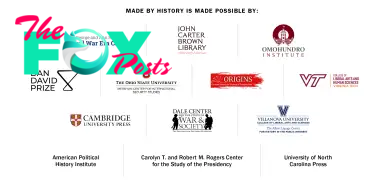
Still, there have been calls to eliminate the college essay from admissions requirements from both the right and the left, as either frivolously inclusive, or potentially exclusionary. Now, at a time when there are major political constraints on supporting diversity and inclusion at the national level, personal essays give admissions committees important flexibility. They also allow colleges to evaluate students for underrated but essential intellectual and personal qualities hard to observe elsewhere, including the capacity for growth, self-reflection, and awareness of the world around them.
The history of modern admissions shows how institutions of higher education have sought to engineer their classes, often reinforcing harmful racial, class, and gender hierarchies. There is little objectivity in the metric of “fit” that has shaped American admissions practices. But the Civil Rights era has had a powerful and long-lasting legacy in broadening access through an assessment of applicants that is attentive to identity. However flawed the system, the essay offers something no other metric can: an account of a student’s lived experience, in their own words.
Sarah Stoller is a writer and historian. She also tutors college essay writing.
Made by History takes readers beyond the headlines with articles written and edited by professional historians. Learn more about Made by History at TIME here. Opinions expressed do not necessarily reflect the views of TIME editors.
-
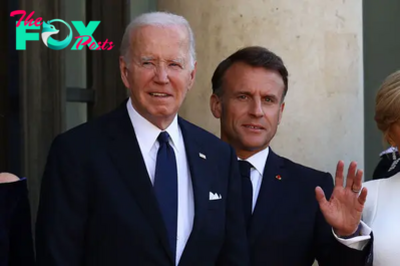
 History1w ago
History1w agoThe Deep Roots of the Franco-American Alliance
-

 History1w ago
History1w agoThere’s Still More to Learn From the Debate Over American Monuments
-
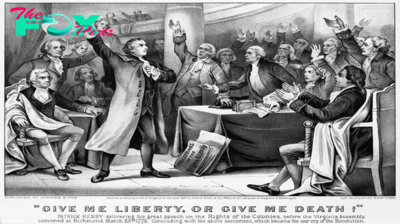
 History1w ago
History1w agoThe True Meaning of ‘Give Me Liberty’
-
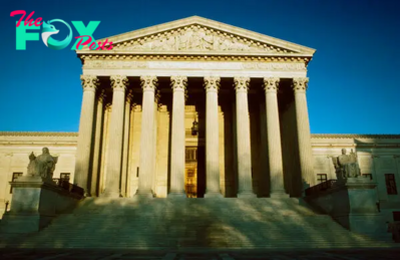
 History1w ago
History1w agoSupreme Court Opinions Don’t Have to Be the End of the Fight for Justice
-

 History2w ago
History2w agoThe History Behind Pride House at the Olympics
-

 History2w ago
History2w agoTV Debates Have Always Been About Sound Bites Over Substance
-

 History2w ago
History2w agoHow Furry Pet Rabbits Can Become Invasive Feral Pests
-
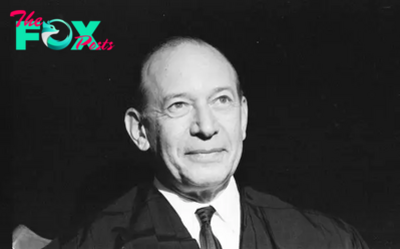
 History2w ago
History2w agoA Mistake in the Early 1970s Still Haunts Supreme Court Ethics


